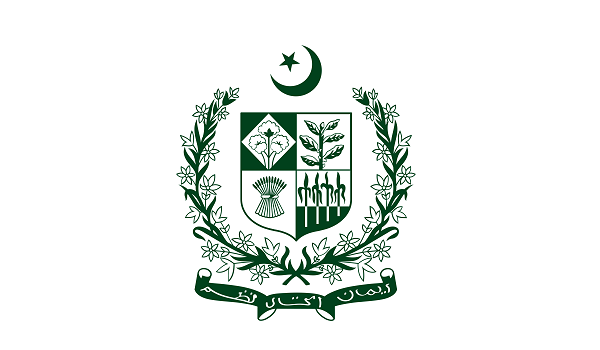ISLAMABAD: Pakistan and the International Monetary Fund (IMF) have agreed to revise downward all projected macroeconomic indicators for the current fiscal year.
Pakistan will revise downward the real GDP growth rate, inflation, fiscal deficit and
current account deficit besides moving ahead with managed float exchange regime over the next 23 months for obtaining $7.6 billion loan from the Fund under the Standby Arrangement, the IMF states on Tuesday.
Under the agreed macroeconomic indicators between Islamabad and the IMF, Pakistan’s external debt is bound to rise sharply and will touch 31.4 per cent of the GDP in fiscal year 2008-09 against 26.5 per cent in last financial year 2007-08. The external debt will further go up to 33.2 per cent of GDP by 2009-2010.
The projected real GDP growth rate has been lowered from 5.5 per cent to 3.4 per cent during the fiscal year 2008-09, which is estimated to go up to 5 per cent of the GDP by 2009-2010. The inflation target has envisaged at 23 per cent during the current fiscal year 2008-09 from earlier set target of 12 per cent. The average CPI based inflation will be brought down to 13 per cent by 2009-2010.
The Gross National Saving in percentage of GDP is estimated at 13.5 per cent for 2008-09 and 15.7 per cent for 2009-2010. The Gross Capital formation in percentage of GDP is projected at 20 per cent for 2008-09 and 21.3 per cent for 2009-2010.
Pakistan and the IMF also agreed to scale down fiscal deficit target from 7.4 per cent of the GDP in 2007-08 to 4.2 per cent of the GDP for the current fiscal year.
Both sides also envisaged to scale down the fiscal deficit further to 3.3 per cent of the GDP for the next fiscal year 2009-2010.
The overall debt in percentage of GDP will be hovering around 54.6 per cent by 2008-09 which will be slightly decreased to 52.4 per cent by 2009-2010. It means that the domestic debt will be decreased while external debt will rise in the next fiscal year.
Pakistan and the IMF also projected to curtail Money Growth (M2) in the current fiscal year to 10.8 per cent from 15 per cent in 2007-08. The money supply growth is estimated to grow by 15 per cent in next fiscal year 2009-2010.
Both the IMF and Pakistan also agreed to revise projections for the current account deficit (CAD) for the current fiscal year, which will remain hovering around 6.4 per cent of the GDP from 8.4 per cent of the GDP in previous fiscal year. The CAD has been projected at 5.7 per cent of the GDP by the next fiscal year 2009-2010.
Pakistan and IMF agreed to maintain foreign currency reserves at the level of $8.591 billion by end June 30, 2009 which will be jacked up to $11.291 billion on June 30, 2010.
The IMF’s Executive Board has approved a $7.6 billion loan for Pakistan to support its program to stabilize and rebuild the economy while expanding its social safety net to protect the poor.
The 23-month Stand-By loan will enable the government to implement a stabilization program that envisages a significant tightening of fiscal and monetary policies to bring down inflation and reduce the external current account deficit to more sustainable levels. The program seeks to address current macroeconomic imbalances while protecting the poor and preserving social stability in the South Asian country of 170 million people.
“By providing large financial support to Pakistan, the IMF is sending a strong signal to the donor community about the country’s improved macroeconomic prospects,” said IMF Deputy Managing Director Takatoshi Kato.
“The Government’s program has two objectives: first, to restore overall economic stability and confidence through a tightening of macroeconomic policies, and second, to do so in a manner that ensures social stability and adequate support for the poor during the adjustment process,” said Juan Carlos Di Tata, the IMF mission chief to Pakistan.
The Pakistan authorities have already taken some difficult steps to achieve these objectives: energy subsidies have been cut and the interest rate has been increased to tighten monetary policy. The authorities’ program for the coming 24 months envisages a number of additional steps.
The State Bank Of Pakistan (SBP) will act on monetary policy to build its international reserves, bring down inflation to 6 percent in 2010, and eliminate central bank financing of the government. The program includes measures to improve monetary management and enhance the SBP’s bank resolution capacity, and avoid the use of public resources to support the stock market.
Expenditure on the social safety net will be increased to protect the poor through both cash transfers and targeted electricity subsidies. The fiscal program for 2008/09 envisages an increase in spending on the social safety net of 0.6 percentage points of GDP to 0.9 percent of GDP. Pakistan will also work with the World Bank to prepare a more comprehensive and better targeted social safety net program.
The financing from the IMF will help to ease the path of adjustment and will provide a strong signal of support to the international community. Of the $7.6 billion loan, $3.1 billion will be made available by the IMF immediately to strengthen the reserve position. And the regular monitoring of the economy by the IMF will show how the macroeconomic objectives set by the Government are being met and whether they need to be adjusted in the light of changing circumstances.
“It is important to point out that the program-and its conditionality-is based on the targets and measures that the authorities have themselves set for the next two years. The IMF is convinced that the best implemented programs are the ones that are home grown and fully owned by the country,” Di Tata said.
Alongside the IMF’s financial support, there is an urgent need to mobilize additional donor support to strengthen Pakistan’s resilience to potential shocks, help finance the expanded social safety net, and allow for higher spending on development programs. “The Fund stands ready to participate in any donor meeting to provide the economic and financial analysis that could underpin expanded support.”
Success of the program could be affected by a number of risks. They arise from security and implementation uncertainties, a more severe-than-anticipated slowdown in economic activity in trading partners, and lower-than-expected private capital inflows. “Sustained and forceful implementation will be key to the success of the program,” Di Tata stated.






